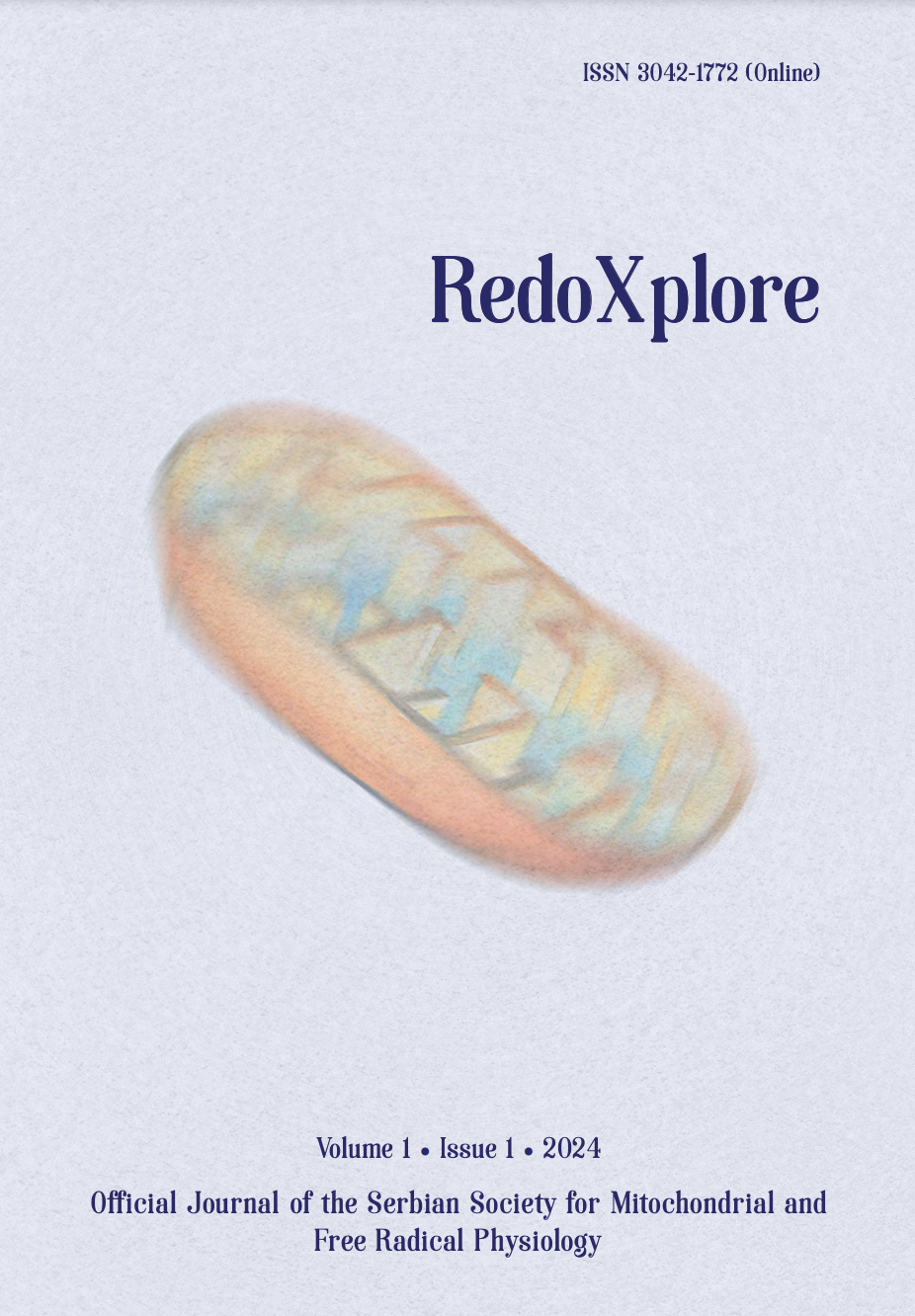
More articles from Volume 1, Issue 1, 2024
REDOX AND METABOLIC REPROGRAMMING OF BREAST CANCER CELLS AND ASSOCIATED ADIPOSE TISSUE - THE CORNERSTONES OF ADAPTIVE TUMOUR BEHAVIOUR
INSULIN MODULATES MITOCHONDRIAL STRUCTURAL AND FUNCTIONAL MOSAICISM IN BROWN ADIPOCYTES
NITRITE MITIGATES OXIDATIVE BURST IN ISCHEMIA/REPERFUSION IN BRAIN SLICES
NITRIC OXIDE, SUPEROXIDE AND PEROXYNITRITE – REDOX REGULATION OF THE CARDIOVASCULAR SYSTEM BY NITRO-OXIDATIVE STRESS AND S-NITROS(YL)ATION
DIETARY NITRATE AS PIVOT ON THE GUT MICROBIOTA-HOST REDOX COMMUNICATION
EXPERIMENTAL DATA ON SQUAMOUS CELL CARCINOMA
Department of Pharmacy, Laboratory of Pharmaceutical Technology, School of Health Sciences, National and Kapodistrian University of Athens , Athens , Greece
Department of Pharmacy, Laboratory of Pharmaceutical Technology, School of Health Sciences, National and Kapodistrian University of Athens, Panepistmiopolis , Athens , Greece
Department of Pharmacy, Laboratory of Pharmaceutical Technology, School of Health Sciences, National and Kapodistrian University of Athens, Panepistmiopolis , Athens , Greece
Department of Pharmacy, Laboratory of Pharmaceutical Technology, School of Health Sciences, National and Kapodistrian University of Athens, Panepistmiopolis , Athens , Greece
Department of Pharmacy, Laboratory of Pharmaceutical Technology, School of Health Sciences, National and Kapodistrian University of Athens, Panepistmiopolis , Athens , Greece
Department of Pharmacy, Laboratory of Pharmaceutical Technology, School of Health Sciences, National and Kapodistrian University of Athens, Panepistmiopolis , Athens , Greece
Department of Pharmacy, Laboratory of Pharmaceutical Technology, School of Health Sciences, National and Kapodistrian University of Athens, Panepistmiopolis , Athens , Greece
Department of Pharmacy, Laboratory of Pharmaceutical Technology, School of Health Sciences, National and Kapodistrian University of Athens, Panepistmiopolis , Athens , Greece
Department of Pharmacy, Laboratory of Pharmaceutical Technology, School of Health Sciences, National and Kapodistrian University of Athens, Panepistmiopolis , Athens , Greece
Department of Pharmacy, Laboratory of Pharmaceutical Technology, School of Health Sciences, National and Kapodistrian University of Athens, Panepistmiopolis , Athens , Greece
Institute of Chemical Biology, National Hellenic Research Foundation , Athens , Greece
Institute of Chemical Biology, National Hellenic Research Foundation , Athens , Greece
Department of Pharmacy, Laboratory of Pharmaceutical Technology, School of Health Sciences, National and Kapodistrian University of Athens, Panepistmiopolis , Athens , Greece
Laboratory of Pathologic Anatomy, Evgenidio Hospital, School of Health Sciences, National and Kapodistrian University of Athens , Athens , Greece
Pathologoanatomic Laboratory, Naval Hospital of Athens , Athens , Greece
Department of Dermatology, Baylor College of Medicine , Houston , United States
Department of Pharmacy, Laboratory of Pharmaceutical Technology, School of Health Sciences, National and Kapodistrian University of Athens, Panepistmiopolis , Athens , Greece
Editor: Bato Korac
Published: 29.08.2024.
Keynote lectures
Volume 1, Issue 1 (2024)
Abstract
In recent decades, a global increase in the incidence of skin cancer, particularly squamous cell carcinoma (SCC), has been observed. To explore the pathogenesis and potential therapeutic approaches for this cancer type, in vivo studies employing various mouse models and ultraviolet (UV) light have been conducted. A comparative study on skin carcinogenesis across four hairless mouse models subjected to UV light exposure was initiated. The mouse strains utilized in this research were: SKH-hr1, SKH-hr2, SKH-hr2+ApoE, and immunodeficient Nude. Based on the various measured parameters, in contrast to the SKH-hr1, SKH-hr2+apoE and SKH-hr2 models were identified as the most appropriate. The bark extract of Pinus maritima (PBE) was examined for SCC preventive action. It was evaluated in two different experimental animal tumor models induced by ultraviolet radiation (UVR) and combination of UVR with 7,12-dimethylbenz[a]anthracene. A significant decrease in the number of animals bearing tumors, increase in viability and delayed appearance of tumors were observed. Through immunochemical analysis, the expression of P-glycoprotein, multi-drug resistance-associated protein (MRP), and glucose (GLUT-1) transporters in SCC, SCC adjacent area, and normal skin tissues were examined. It was revealed that all assessed transporters were expressed across all skin tissues; however, expression levels were notably higher in tumor and tumor-adjacent areas compared to normal tissues. Male and female hairless SKH-2 mice were exposed for 10 months to cigarette smoke (CS) and/or UV light after administration or not of French maritime pine bark extract (PBE) to study the SCC induction and possible protection by PBE. The results showed that UV and CS were harmful and act synergistically inducing SCC, whereas PBE seems to protect skin against SCC. Type 1 and 2 diabetic, and nondiabetic male mice were exposed to UV radiation for eight months. Remarkably, Type 1 diabetic mice did not develop squamous cell carcinoma or pigmented nevi, contrary to normal and Type 2 diabetic skin. Type 1 diabetic mice showed protection against oxidative stress.
Citation
Copyright

This work is licensed under a Creative Commons Attribution-NonCommercial-ShareAlike 4.0 International License.
Article metrics
The statements, opinions and data contained in the journal are solely those of the individual authors and contributors and not of the publisher and the editor(s). We stay neutral with regard to jurisdictional claims in published maps and institutional affiliations.






